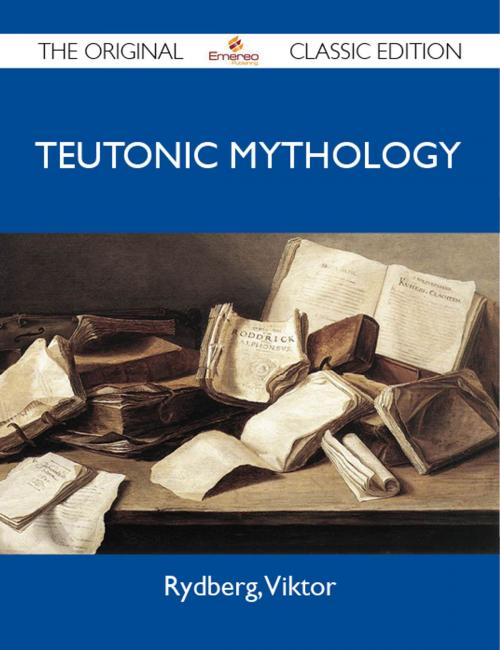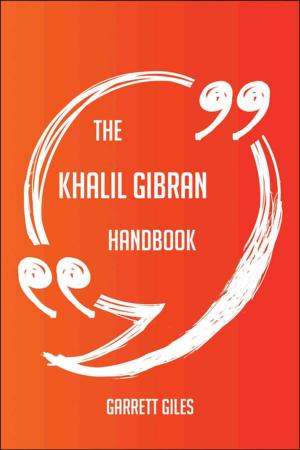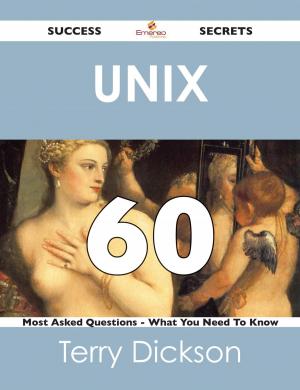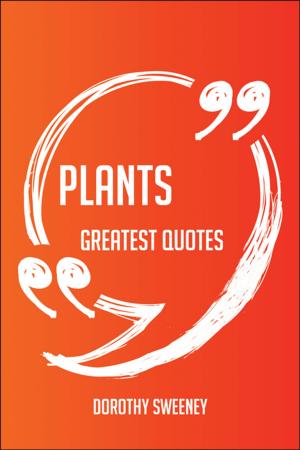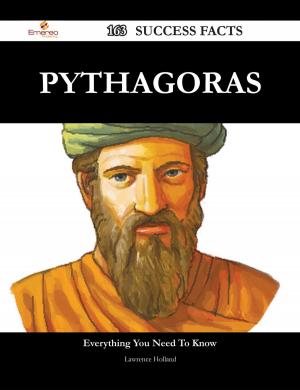Teutonic Mythology - The Original Classic Edition
Nonfiction, Reference & Language, Reference, Fiction & Literature| Author: | Viktor Rydberg | ISBN: | 9781486409976 |
| Publisher: | Emereo Publishing | Publication: | October 24, 2012 |
| Imprint: | Emereo Publishing | Language: | English |
| Author: | Viktor Rydberg |
| ISBN: | 9781486409976 |
| Publisher: | Emereo Publishing |
| Publication: | October 24, 2012 |
| Imprint: | Emereo Publishing |
| Language: | English |
This is a freshly published edition of this culturally important work, which is now, at last, again available to you.
Enjoy this classic work. These few paragraphs distill the contents and give you a quick look inside:
And when the startling discovery was made that the sacred books of the Iranians and Hindoos were written in languages related to the culture languages of Europe, when these linguistic monuments betrayed a wealth of inflections in comparison with which those of the classical languages turned pale, and when they seemed to have the stamp of an antiquity by the side of which the European dialects seemed like children, then what could be more natural than the following conclusion: The original form has been preserved in the original home; the farther the streams of emigration got away from this home, the more they lost on the way of their language and of their inherited view of the world; that is, of their mythology, which among the Hindoos seemed so original and simple as if it had been watered by the dews of lifes dawn.
....The strong resemblance found between Zend and Sanscrit, and which makes these dialects a separate subdivision in the Aryan family of languages, must now, since we have learned to regard them as sister-tongues, be interpreted as a proof that the Zend people or Iranians and the Sanscrit people or Hindoos were in ancient times one people with a common country, and that this union must have continued to exist long after the European Aryans were parted from them and had migrated westwards.
....That the word originally meant copper, and afterwards came to signify bronze, which is an alloy of copper and[Pg 24] tin, seems to be a matter of course, and that it was applied only to copper and not to bronze among the ancient Aryans seems clear not only because a common name for tin is wanting, but also for the far better and remarkable reason particularly pointed out by Schrader, that all the Aryan European languages, even those which are nearest akin to each other and are each others neighbours, lack a common word for the tools of a smith and the inventory of a forge, and also for the various kinds of weapons of defence and attack.
....If we now, following the strict rules of methodology which Latham insists on, bear in mind that the cradle of a race- or language-type should, if there are no definite historical facts to the contrary, especially be looked for where this type is most abundant and least changed, then there is no doubt that the part of Aryan Europe which the ancestors of the Teutons inhabited when they developed the Aryan tongue into the Teutonic must have included the coast of the Baltic and the North Sea.
....If, for instance, the Teutonic mythology on the one hand and the Asiatic Aryan (Avesta and Rigveda) on the other are made the subject of comparative study, and if groups of myths are found which are identical not only in their general character and in many details, but also in the grouping of the details and the epic connection of the myths, then the probability that they belong to an age when the ancestors of the Teutons and those of the Asiatic Aryans dwelt together is greater, in the same proportion as the probability of an intimate and detailed exchange of ideas after the separation grows less between these tribes on account of the geographical distance.
This is a freshly published edition of this culturally important work, which is now, at last, again available to you.
Enjoy this classic work. These few paragraphs distill the contents and give you a quick look inside:
And when the startling discovery was made that the sacred books of the Iranians and Hindoos were written in languages related to the culture languages of Europe, when these linguistic monuments betrayed a wealth of inflections in comparison with which those of the classical languages turned pale, and when they seemed to have the stamp of an antiquity by the side of which the European dialects seemed like children, then what could be more natural than the following conclusion: The original form has been preserved in the original home; the farther the streams of emigration got away from this home, the more they lost on the way of their language and of their inherited view of the world; that is, of their mythology, which among the Hindoos seemed so original and simple as if it had been watered by the dews of lifes dawn.
....The strong resemblance found between Zend and Sanscrit, and which makes these dialects a separate subdivision in the Aryan family of languages, must now, since we have learned to regard them as sister-tongues, be interpreted as a proof that the Zend people or Iranians and the Sanscrit people or Hindoos were in ancient times one people with a common country, and that this union must have continued to exist long after the European Aryans were parted from them and had migrated westwards.
....That the word originally meant copper, and afterwards came to signify bronze, which is an alloy of copper and[Pg 24] tin, seems to be a matter of course, and that it was applied only to copper and not to bronze among the ancient Aryans seems clear not only because a common name for tin is wanting, but also for the far better and remarkable reason particularly pointed out by Schrader, that all the Aryan European languages, even those which are nearest akin to each other and are each others neighbours, lack a common word for the tools of a smith and the inventory of a forge, and also for the various kinds of weapons of defence and attack.
....If we now, following the strict rules of methodology which Latham insists on, bear in mind that the cradle of a race- or language-type should, if there are no definite historical facts to the contrary, especially be looked for where this type is most abundant and least changed, then there is no doubt that the part of Aryan Europe which the ancestors of the Teutons inhabited when they developed the Aryan tongue into the Teutonic must have included the coast of the Baltic and the North Sea.
....If, for instance, the Teutonic mythology on the one hand and the Asiatic Aryan (Avesta and Rigveda) on the other are made the subject of comparative study, and if groups of myths are found which are identical not only in their general character and in many details, but also in the grouping of the details and the epic connection of the myths, then the probability that they belong to an age when the ancestors of the Teutons and those of the Asiatic Aryans dwelt together is greater, in the same proportion as the probability of an intimate and detailed exchange of ideas after the separation grows less between these tribes on account of the geographical distance.
